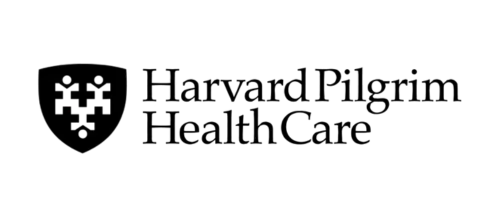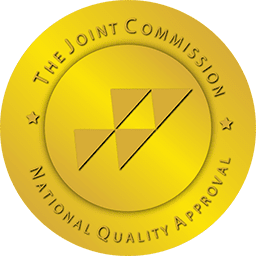Being diagnosed with a type of bipolar disorder can cause a lot of uncertainty in an individual. They wonder what it will mean for them and their family and how it will affect their life. One of the most common concerns is how bipolar type I differs from bipolar type II and how the treatments will vary.
Some individuals who don’t tend to experience deep depressive episodes may even question if they received an accurate diagnosis in the first place. To help you better understand what a diagnosis of bipolar means, we’re going to look at bipolar I and bipolar II. Then, we’ll take a deep look at their similarities and important differences.
What is Bipolar Disorder?
Bipolar disorder is a mental health condition marked by significant mood swings, including either hypomanic or manic episodes, and frequently involves some degree of depression. While having family members with preexisting diagnoses of bipolar disorder doesn’t mean that other family members will also have it, there is a strong genetic predisposition that can be carried through hereditary lines.
Being diagnosed with bipolar disorder doesn’t mean you have to deal with it without help, and various treatments are available. Those diagnosed with bipolar may benefit from different therapies and medications that can help minimize or control symptoms while enhancing their quality of life. Understanding the differences between bipolar I and bipolar II can help diagnosed individuals be informed about available treatment options.
Understanding Bipolar I
One of the essential criteria for being diagnosed with bipolar I, according to the Diagnostic and Statistical Manual of Mental Disorders Fifth Edition (also known as the DSM-V), is the presence of at least one manic episode in their history. The manic episode must be at least a week in length and will involve three or more of the following conditions:
- Decreased need for sleep
- Elevated self-esteem or feelings of grandiosity
- Racing thoughts or ideas
- Increased talkativeness
- High potential for distraction
- Increase in goal-oriented activity
- Engaging in risky and potentially dangerous behavior such as reckless spending, risky sexual encounters, or physically dangerous activities
The manic episode may be severe enough to warrant hospitalization due to the risky behavior. Manic episodes resulting from bipolar I may also involve delusions or hallucinations, though they aren’t required for diagnosis. Mania brought on by bipolar I must also not be the result of schizoaffective disorder and may not be coincident with schizophrenia, delusional disorder, or other similar psychotic disorders.
Understanding Bipolar II
The primary feature that can lead to a diagnosis of bipolar II is the occurrence of a major depressive episode and at least one hypomanic episode. The DSM-V states that a hypomanic episode is identified by having three or more characteristics of a manic episode that lasts four days or more. The depressive symptoms experienced during a major depressive episode will include at least five of the following criteria and will last for two weeks or more:
- Depressed mood lasting most of the day, each day of the episode
- Interest in activities will be lowered or even absent
- Reduced appetite or significant reduction in weight
- Restlessness
- Disruption in the sleep cycle, either sleeping more than usual or not being able to sleep
- Low energy or fatigue
- Feeling guilty or worthless
- Challenges maintaining concentration
- Problems with decision making
- Self-harm or suicidal ideation
For a bipolar II diagnosis to be accurate, the depressive and hypomanic episodes must be unrelated and unexplainable by schizoaffective disorder or similar psychotic disorders. The episodes must also not occur with any psychotic disorder, including any schizophreniform or schizophrenia spectrum condition.
Hypomanic episodes are considered less severe than a full manic episode and will not include hallucinations or delusions. They will often cause less impairment than manic episodes, although both lead to difficulty functioning normally in the individual’s daily life.
What is the difference between Bipolar I and Bipolar II?
There are a few primary differences between bipolar I and bipolar II. Bipolar I and II have similar symptoms and symptom patterns. However, people who have bipolar II will experience less severe mania, called hypomania. Hypomania is not considered an indicator if the sole cause of the episode was drug or alcohol use.
Bipolar I may involve depressive episodes, while bipolar II must involve a major depressive episode. Additionally, bipolar I may include psychotic features, such as delusions or hallucinations, while there will be no psychosis involved in bipolar II.
Coping with Bipolar Disorder

Many people feel a sense of loss for the perceived “benefits” of manic episodes or hypomania, such as increased goal-driven activity or enhanced creativity. This sense of loss can occur even when the individual only experiences one or two “cycles” in 12 months.
This means that daily life post-stabilization can be challenging and may require continued treatment, such as long-term therapy. This continued therapy can help minimize or prevent depression, significantly reducing activity and creativity.
Treatments for Bipolar Disorder
The most common treatments for bipolar I and bipolar II include medication and psychotherapy. Rare instances can require hospitalization if the depressive or manic episodes trigger suicidal ideation or action, but this is generally only used to help ensure safety during stabilization.
Medication is frequently used for mood stabilizers and other drugs that help normalize neurotransmitter levels. Psychotherapy is used in both group settings and individual sessions to help the individual learn more effective coping mechanisms and to help them better understand how their bipolar disorder affects them.
How to find the best treatment plan
If you think you may be living with undiagnosed bipolar disorder, the best thing you can do is talk to a professional. Not only will you get a firm diagnosis, but you can also begin creating a treatment plan with your healthcare professional. Reach out to Absolute Awakenings and discuss your needs in a comfortable and confidential environment.
References
- Severus E, Bauer M. Diagnosing bipolar disorders in DSM-5. Int J Bipolar Disord. 2013;1:14. doi:10.1186/2194-7511-1-14
- Dailey MW, Saadabadi A. Mania. In: StatPearls. StatPearls Publishing; 2022. Accessed January 4, 2023. http://www.ncbi.nlm.nih.gov/books/NBK493168/
- Bains N, Abdijadid S. Major Depressive Disorder. In: StatPearls. StatPearls Publishing; 2022. Accessed January 4, 2023. http://www.ncbi.nlm.nih.gov/books/NBK559078/
- Bipolar Disorder. National Institute of Mental Health (NIMH). Published September 2022. Accessed January 4, 2023. https://www.nimh.nih.gov/health/topics/bipolar-disorder
- Berry J. Mania vs. hypomania: Differences, similarities, and treatments. Published March 1, 2019. Accessed January 4, 2023. https://www.medicalnewstoday.com/articles/324602












